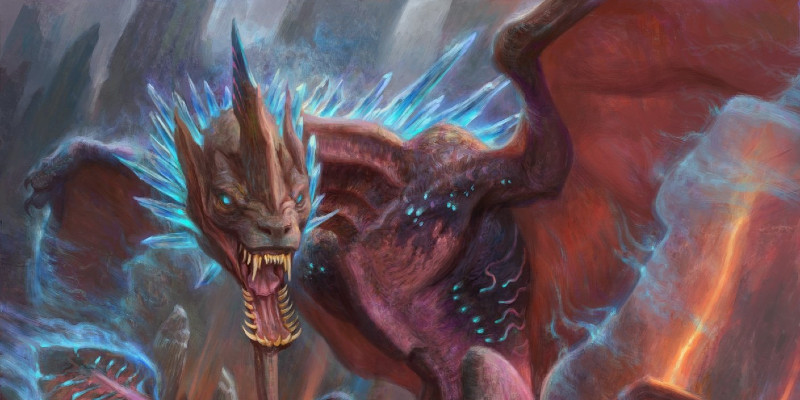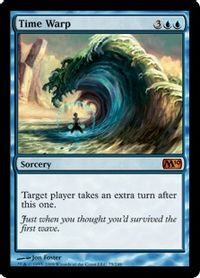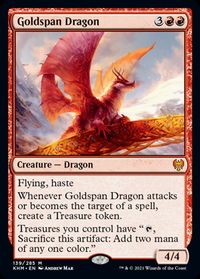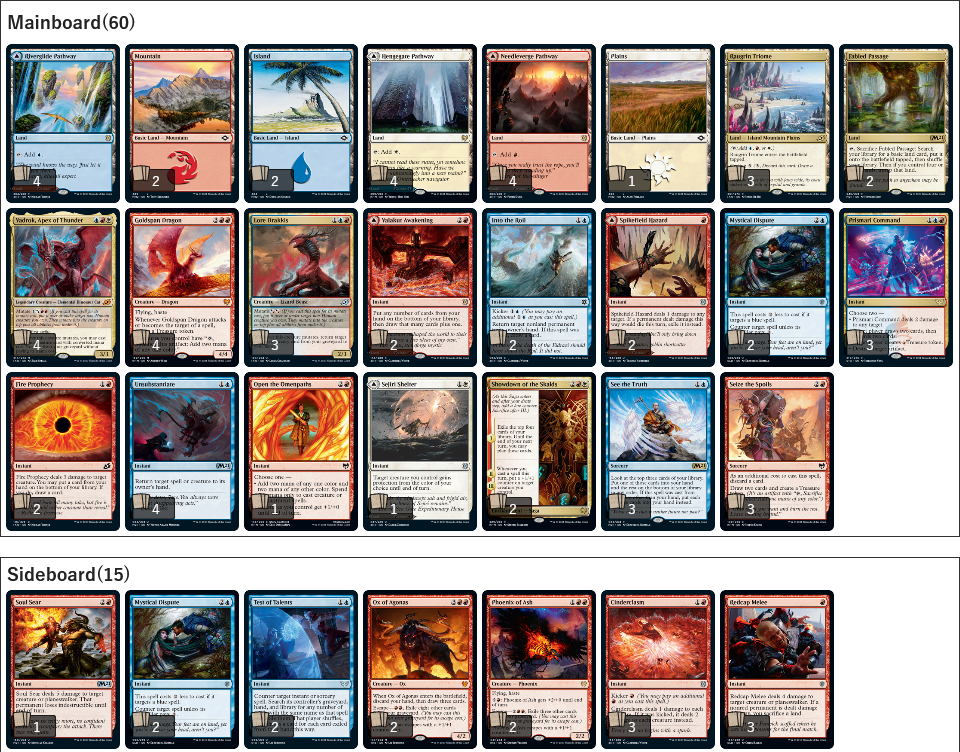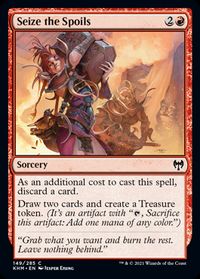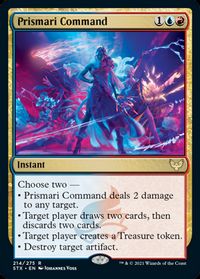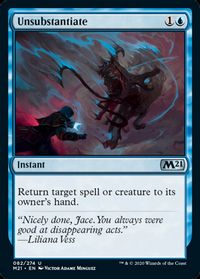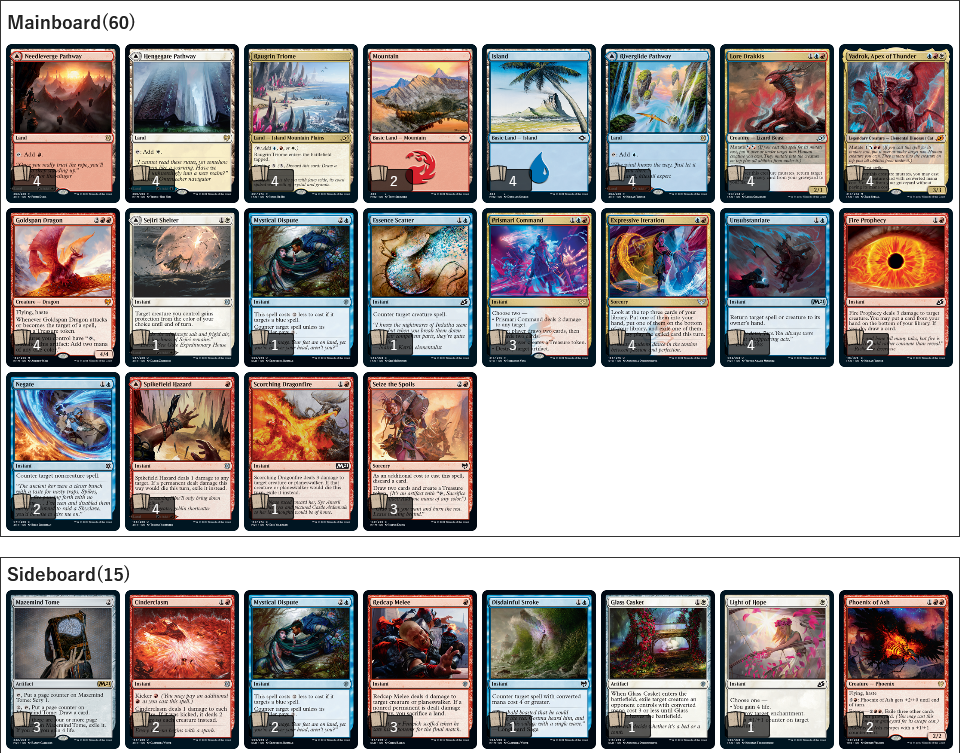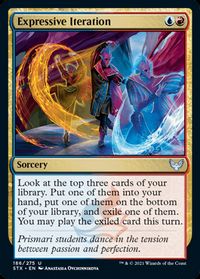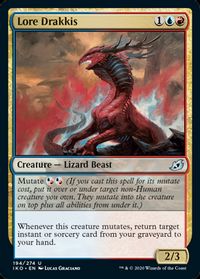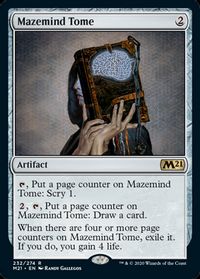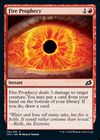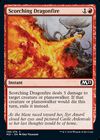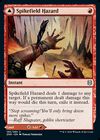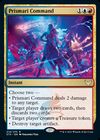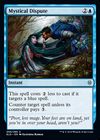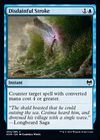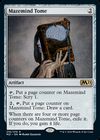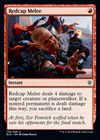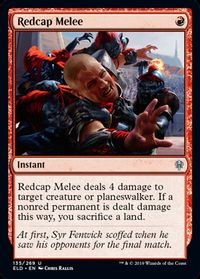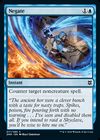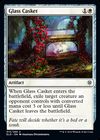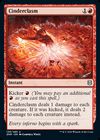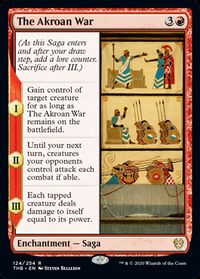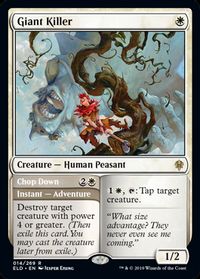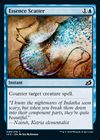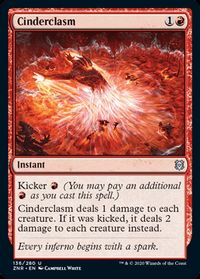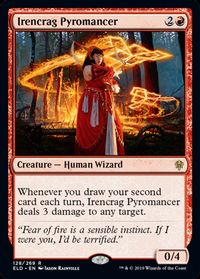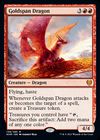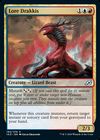Introduction
Hello everybody!
If you’re reading this article, there’s a good chance that you already know that the Strixhaven Championship tournament was held last weekend, and you might even know that I made it to the top 8. If you didn’t, well, now you do.
Strixhaven Championship and Deck Selection
The talk of the tournament was the Jeskai Turns deck in Historic, and for good reason. It had a 60,7% win rate at the tournament and all 4 players in the top 4 were playing it.
However, I would argue that there was an even better deck in the tournament: Jeskai Mutate in Standard. Only a handful of players played it, and it wasn’t featured in the Historic playoffs on Sunday, but out of the few people playing it both my teammate, David Inglis and I made the top 8.
Excluding mirror matches played against other team members, our team scored an astonishing 64% win rate in Standard with it. It’s probably the best deck I’ve ever played at a professional-level tournament, and definitely the most fun one. It has also been the best performing deck on the Arena Mythic ladder according to the official coverage, and won the latest Standard Challenge on Magic Online.
The first appearance of the deck that I’m aware of is Matthieu Avignon’s performance with it at the Rivals League Weekend in May.
The Basics
If you haven’t seen the deck in action before, here’s the basics of what it’s trying to do:
1. Cast 《Goldspan Dragon》.
2. Cast a 《Vadrok, Apex of Thunder》 on the 《Goldspan Dragon》, casting either 《Seize the Spoils》 or 《Prismari Command》 from the graveyard. By doing this you generate two Treasures which you can sacrifice for two mana each thanks to the 《Goldspan Dragon》, which means that 《Vadrok, Apex of Thunder》 was essentially free to cast.
3. Cast more 《Vadrok, Apex of Thunder》 and/or 《Lore Drakkis》 onto the 《Goldspan Dragon》, generating more mana and more cards in hand. Note that when you play the second mutator onto the 《Goldspan Dragon》 you get 2 triggers, when you play the third mutator you get 3 triggers, and so on, meaning that after the first mutator you’re generating value with each subsequent one.
4. Play 《Unsubstantiate》 on the 《Goldspan Dragon》 to get all the pieces back in your hand.
5. Repeat the previous steps until you have a ton of cards in hand, the opponent doesn’t have any creatures in play, and/or you kill them by looping 《Prismari Command》.
There’s a section for more detailed loops later, but that is the basic idea. It feels confusing at first, I know, but once you try it out for yourself a couple of times it gets a lot easier to grasp. If you want to see a demonstration of the deck in action, you can check the end of my game 2 against Raphael Levy in the video below, starting at 5h 54min 20s.
However, this is not an all-in combo deck. The deck is very good at playing the control role against aggro decks, and you can often win games just by attacking with 《Goldspan Dragon》. You also don’t need to go for the loops with 《Unsubstantiate》, you can easily win just by generating an insurmountable amount of value with the mutate triggers and bury the opponent in card advantage.
Tuning the Deck
After David spotted Avignon’s deck from Rivals League, our team started tuning it together. Interestingly, there was a team of Japanese players including Rei Sato and Kenta Harane who also found the deck and they ended up doing almost all of the same changes to the original list as we did. Both teams arriving at the same conclusions independently makes me quite confident that those changes were good ones.
Deck List: Jeskai Mutate
Here is the list that I registered for the tournament:
Probably the most important change compared to the original is playing 4 copies of 《Expressive Iteration》, which is one of the most powerful cards in the format. 《See the Truth》 is better when you get it off of 《Vadrok, Apex of Thunder》’s trigger or 《Showdown of the Skalds》, but the 《Showdown of the Skalds》 was clunky and we didn’t really want to play it anyway, and if you successfully mutate 《Vadrok, Apex of Thunder》 onto another creature, casting 《Expressive Iteration》 instead will be good enough to win almost always. On the other hand, if you’re playing a grindy game of card advantage or setting yourself up to combo later, 《Expressive Iteration》 is MUCH better.
Cutting the 《Showdown of the Skalds》 also meant that we could streamline the mana base. This deck is very close to being straight Izzet anyway, as your only other white card is 《Vadrok, Apex of Thunder》, which you cast most of the time for it’s mutate cost. Between 《Expressive Iteration》 and 《Lore Drakkis》’ mutate cost, the basic 《Plains》 in the mana base often felt costly, so we decided to cut that one and the 《Fabled Passage》 along with it.
Regarding the flip lands, 《Spikefield Hazard》 felt significantly better than 《Valakut Awakening》. Having cheap incidental removal for cards like 《Edgewall Innkeeper》 and 《Rimrock Knight》 made the aggro matchups a lot better. It can also sometimes help on the mutate turns, as it can act as a 《Lotus Petal》 by targeting your own 《Goldspan Dragon》.
This is especially important if you cast 《Goldspan Dragon》 without any extra mana available. If you attack with the 《Goldspan Dragon》 and make a Treasure, you can play the 《Spikefield Hazard》 on the 《Goldspan Dragon》, take it back with a 《Lore Drakkis》 and cast it again, which brings you to 4 mana and gives you the option to cast a 《Vadrok, Apex of Thunder》 from your hand. This usually doesn’t lead to a full loop, but it does let you get the engine started.
When working on the deck, we found it to have a great matchup against Sultai Ultimatum, a bad one against Izzet Dragons, and decent or good matchups against the rest. We expected Sultai to be the most played deck and Izzet Dragons to be a close second, which turned out to be correct. We knew that if we could make the Izzet Dragons matchup passable instead of downright bad, we would have a really good deck on our hands.
That led to the next innovation: playing 《Mazemind Tome》 in the sideboard. We quickly identified it as the most important card for the Izzet Dragons deck in the matchup, and decided that the best way to fight it is to have 《Mazemind Tome》 of our own. After adding those the post-board games started feeling a lot better, because the Mutate deck could actually destroy opposing 《Mazemind Tome》 with 《Prismari Command》 but they couldn’t interact with ours.
Correctly estimating the power level of decks like this for events is very hard. We wanted to avoid testing the deck on the Arena ladder as much as possible so it would stay under the radar, but internal testing had its own problems. We knew that it would perform better at the tournament than it did in our internal testing because we had a lot of experience playing both with and against it, and we understood how the deck works, whereas our opponents at the tournament would not. But how big would that effect be? How do you estimate something like that?
Loops and Timers
Before we go into the actual loops, I have to mention that on Arena you can’t actually go infinite. This deck would be significantly better in a live Magic tournament, as you would be able to shortcut some of the loops, but on Arena you have to perform every single action manually and you only have a limited amount of time to do so. There is a hard cap to the length of your turn on Arena, which kicks in somewhere around 5 minutes depending on how many time banks you have accumulated.
This means that it’s very common that you won’t be able to actually kill the opponent with the 《Prismari Command》 and 《Spikefield Hazard》. What I recommend to players who are just starting out with the deck is to not worry about actually killing the opponent – just generate mana and cards and trust that good things will happen.
It takes some time to get used to it, but once you get the hang of it you’ll notice ways to optimize the process and be able to figure out when you can go for the kill and when you should just generate value and try to win later instead.
When you have three or more mutate creatures you have some room for error and don’t need to execute everything perfectly, so when you’re starting out you should keep that in mind and try to find the third mutate creature instead of going off with just two.
The core principle of the loop is basically always the same: during the loop you have to generate enough mana to recast your 《Goldspan Dragon》, and in order to do that you must have either 《Seize the Spoils》 or 《Prismari Command》 in your graveyard.
The loop that requires the fewest pieces is also probably the most complicated one, and you need to either have a stop on your main phase or play with full control mode enabled – otherwise you’ll end up killing your own 《Goldspan Dragon》.
It goes like this:
The Loop
1. Cast 《Goldspan Dragon》 with 4 mana available.
2. Cast 《Vadrok, Apex of Thunder》 with mutate cost and get a Treasure from the 《Goldspan Dragon》’s trigger. (1 Treasure in play)
3. Target and cast 《Prismari Command》 with 《Vadrok, Apex of Thunder》’s trigger, choosing 2 damage to 《Goldspan Dragon》 and making a Treasure. (1 Treasure in play)
4. Get a Treasure from the 《Goldspan Dragon》’s trigger. (2 Treasures in play)
5. Resolve 《Prismari Command》. (3 Treasures)
6. Cast 《Lore Drakkis》 for it’s mutate cost and get a Treasure from the 《Goldspan Dragon》’s trigger. (3 Treasures)
7. Put mutate triggers onto stack so that 《Vadrok, Apex of Thunder》’s trigger resolves last. 《Vadrok, Apex of Thunder》 targets 《Prismari Command》 and 《Lore Drakkis》 targets 《Unsubstantiate》. (3 Treasures)
8. Get 《Unsubstantiate》 back with 《Lore Drakkis》 trigger. (3 Treasures)
9. Put 《Prismari Command》 on the stack with same modes as before and get a Treasure from the 《Goldspan Dragon》’s trigger. (4 Treasures)
10. Cast 《Unsubstantiate》 targeting the 《Goldspan Dragon》 and get a Treasure from the 《Goldspan Dragon》’s trigger. (4 Treasures)
11. Crack all the Treasures for mana. (8 mana floating)
12. Let the 《Unsubstantiate》 resolve. (8 mana floating)
13. Let the 《Prismari Command》 resolve. (8 mana floating and 1 Treasure in play)
14.Recast 《Goldspan Dragon》. (3 mana and 1 Treasure)
15. Crack the last Treasure for mana. (5 mana in pool)
Note that while you target your 《Goldspan Dragon》 with a 《Prismari Command》 that would deal it lethal damage, the 《Goldspan Dragon》 is no longer in play when the 《Prismari Command》 resolves. Also, you have to crack the Treasures while you still have the 《Goldspan Dragon》 in play, otherwise you won’t have enough mana to recast everything.
If you do all these steps correctly, you’ll have 1 more mana than you started with.
Nice and simple, right..?
In a live tournament you could shortcut the process and generate a million mana and then switch the loop so that the 《Prismari Command》 deals 2 damage to the opponent instead of your 《Goldspan Dragon》, leading to an instant win.
On Arena things are different. Going through this loop takes about a minute, so after a couple of iterations you have to try to convert the extra mana into something tangible by either choosing different modes with the 《Prismari Command》 or choosing to cast something else entirely with 《Vadrok, Apex of Thunder》’s triggers, such as an 《Expressive Iteration》 to dig deeper for more mutate creatures. If you check the video below from 5h 47min 50s onwards, you can see me struggling with these exact things while doing this exact loop in the previously mentioned match against Raph Levy.
If you have multiple mutators, the loops become a lot easier. Here’s one example, starting with a 《Goldspan Dragon》 in play and 4 mana in pool:
1. Cast 《Vadrok, Apex of Thunder》 with mutate cost and get a Treasure from the 《Goldspan Dragon》’s trigger. (1 Treasure in play)
2. Target and cast 《Prismari Command》 with 《Vadrok, Apex of Thunder》’s trigger, choosing 2 damage to 《Goldspan Dragon》 and making a Treasure. (1 Treasure in play)
3. Get a Treasure from the 《Goldspan Dragon》’s trigger. (2 Treasures in play)
4. Resolve 《Prismari Command》 (3 Treasures)
5. Cast 《Lore Drakkis》 for it’s mutate cost and get a Treasure from the 《Goldspan Dragon》’s trigger. (3 Treasures)
6. Put mutate triggers onto stack so that 《Vadrok, Apex of Thunder》’s trigger targets the 《Prismari Command》 and 《Lore Drakkis》 targets 《Unsubstantiate》.
7. Resolve both triggers and cast 《Prismari Command》 targeting the opponent for 2 damage and making a treasure. (4 Treasures)
8. Cast another 《Lore Drakkis》 and get a Treasure from the 《Goldspan Dragon》’s trigger. (4 Treasures)
9. Put mutate triggers onto stack so that 《Vadrok, Apex of Thunder》’s trigger targets the 《Prismari Command》 and 《Lore Drakkis》 triggers target anything other than the 《Prismari Command》. (4 Treasures)
10. Resolve all three triggers and cast 《Prismari Command》 targeting the opponent for 2 damage and making a treasure. (5 Treasures)
11. Cast 《Unsubstantiate》 targeting the 《Goldspan Dragon》 and get a Treasure from the 《Goldspan Dragon》’s trigger. (5 Treasures)
12. Crack all the Treasures for mana. (10 mana)
13. Let the 《Unsubstantiate》 resolve. (10 mana)
14. Recast 《Goldspan Dragon》. (5 mana)
In the end you have generated 1 additional mana, dealt 4 damage with 《Prismari Command》 and gotten 2 additional spells back from your graveyard with 《Lore Drakkis》 triggers. If you want, you can also use 《Prismari Command》 to dig deeper into your deck instead of dealing damage, or draw a bunch of cards with 《Seize the Spoils》.
Again, this seems more complicated at first than it really is. Once you’ve done a loop like this a couple of times it will start feeling more intuitive and natural. Just follow the general principles of generating mana and cards and you’ll be fine. The more mutate creatures you find, the easier and faster everything becomes. That’s why it’s often better to just draw more cards instead of looping with minimal resources.
Another rule of thumb that I personally use is that if the opponent has more than 10 life, I don’t try to kill them with only 1 《Prismari Command》 or 1 《Vadrok, Apex of Thunder》, otherwise it’s easy to run out of time. Instead, I’ll continue drawing cards, dealing with the opponents threats and sculpting a hand full of counterspells.
I usually go after their life total only if I have 2 《Prismari Command》 to flash back with 2 《Vadrok, Apex of Thunder》 to trigger them. But as I said earlier, you don’t need to be intimidated or worry about that stuff when you’re starting out, you’ll get there when you start practicing. And you don’t usually need to be precise – if you’re able to mutate multiple things onto a 《Goldspan Dragon》, you’re in a good spot regardless and almost every road will lead to victory.
Matchup Guide
Sultai Ultimatum
I find it funny that we decided to play the Mutate deck because it had a good matchup against Sultai, but in the actual tournament we ended up having a positive record against everything else except the Sultai deck. Was it just variance, or was our testing off? Who knows.
In theory it’s hard for me to see how it would not be a good matchup. They are trying to resolve 7 mana sorceries and you’re playing a combo deck with counterspells and 4 copies of 《Unsubstantiate》!
If possible, wait until they tap low for an expensive card, then counter it or return it to their hand, play a 《Goldspan Dragon》 and go wild. Especially in game 1 their deck is so clunky that it’s hard for them to interact with you. If they have a lot of main deck 《Mystical Dispute》, the matchup becomes a bit harder, but you should still be favored.

vs. Sultai Ultimatum
After sideboarding you get even better at playing draw-go with the 《Mazemind Tome》 and additional counterspells. I would expect most of them to trim some of their top end and replace those with cheaper interaction and threats.
Here you really don’t need to worry about killing them with 《Prismari Command》, just bounce all their creatures and sculpt a hand with a bunch of counterspells and they can’t ever win the game after that. Even just slamming a couple of 《Lore Drakkis》 for extra counterspells will usually be enough.
Izzet Dragons
The decks have a lot of similar cards except that in game 1 they have 《Mazemind Tome》 and you don’t. If they have it and you can’t destroy it, you’re usually going to be in trouble. In those cases it’s often correct to just try to jam things and hope to run them over with your more powerful threats before they can draw infinite cards. If they don’t have a 《Mazemind Tome》, you can often play a slower game and try to resolve a 《Goldspan Dragon》 through their counterspells. Once one resolves, they don’t have clean ways to deal with it in game 1.

vs. Izzet Dragons
Post-board games are usually very long and grindy, and they tend to sideboard in very different ways so it’s hard to predict what they will do. The only constant is that they always bring in 《Redcap Melee》 for your 《Goldspan Dragon》.
《Phoenix of Ash》 gives you a resilient body onto which you can safely try to mutate your creatures, and it can grind a lot of value in the slow post-board games. 《Mazemind Tome》 and 《Expressive Iteration》 are very important, so you should try to counter them more often than not.
Mono Red Aggro
You’re mostly a control deck in this matchup, but the combo aspect definitely helps in closing out the games quickly. Casting 《Vadrok, Apex of Thunder》 as a 3 drop can be risky because they have 《Frost Bite》, but it does come with a pretty big payoff as it stops most of their attacks if they can’t get rid of it.

vs. Mono Red Aggro
They will most likely bring in 《Redcap Melee》 and cut some number of 《Embercleave》 and 1-toughness creatures. 《Embercleave》 is interesting in this matchup as it is probably their most powerful card in a vacuum, but often your plan is to kill all of their creatures anyway in which case the equipment is useless, and you also have 《Prismari Command》 to destroy it for devastating 2-for-1 trades.
All three modes of 《Light of Hope》 are relevant here, as it can destroy 《Anax, Hardened in the Forge》 or 《Roiling Vortex》, get you out of burn range, and protect your 《Goldspan Dragon》s from 《Redcap Melee》.
Personally I don’t think they should be bringing in 《The Akroan War》, but I’ve had multiple opponents doing so. If you see those, you probably want to have 2 or 3 《Unsubstantiate》 in your deck for game 3.
Usually your game plan is simple: just play the control role and try to win a long game. 《Redcap Melee》 makes it harder to go for the combo, but after sideboarding you have a ton of cheap, good interaction, so you can even afford to bring in a card like 《Mazemind Tome》 to eventually grind them out of resources.
Naya Adventures
Very nice matchup. You have good interaction for everything that they are trying to do, and they usually can’t stop you from doing your thing. They can 《Giant Killer》 your 《Goldspan Dragon》, sure, but it’s hard for them to keep up mana and even if they do, you’re pretty good at protecting your 《Goldspan Dragon》.
In this matchup you can even mutate your creatures on top of the 《Goldspan Dragon》 so that it becomes a 2/3 or a 3/3 and immune to 《Giant Killer》. Also, 《Vadrok, Apex of Thunder》 is a very good blocker in this matchup as they don’t really have any removal for it.

vs. Naya Adventures
The matchup is already good in game 1, and then you get 《Cinderclasm》 from the sideboard which are often backbreaking.
Note that against Naya and other 《Lovestruck Beast》 decks, your plan is usually to kill all their 1/1s and leave the 《Lovestruck Beast》 unable to attack.
Jeskai Cycling
This is a weird matchup and I’m not completely sure who’s ahead. In game 1, both decks are kind of bad at dealing with the opponents threats, which often leads to a race.

vs. Jeskai Cycling
In this matchup it’s very important to pay attention to how they sideboarded for game 2 and take that into account when sideboarding for game 3.
For example, some players side out 《Irencrag Pyromancer》 whereas other sideboard out 《Valiant Rescuer》, and you should change the numbers of your 《Cinderclasm》 and 《Redcap Melee》 accordingly. Their numbers of 《Disdainful Stroke》, 《Mystical Dispute》 and 《Zenith Flare》 will also vary in the post-board games.
Again, one of the only things you can be sure of is that they will be bringing in some number of 《Redcap Melee》. You can also expect the post-board games to be a lot longer on average, as both decks get to optimize their interaction suites.
Conclusion
If you want to play a Standard deck that is both extremely powerful and a lot of fun, you should definitely try this one out. Presumably the deck won’t be quite as dominant in a couple of weeks once people learn how to play against it and start playing more Izzet Dragons to combat it, but for the time being I think it’s the best deck in the format.
The biggest downside of the deck is that it’s challenging to play, so if you plan on playing it in an important tournament, make sure that you get a sufficient amount of practice beforehand. To get the most out of the deck you have to be familiar with the looping process and you need to know what to do when the turn timer reaches its limit and the rope starts burning.
Hopefully this guide will help you get started on your journey towards learning the deck, and you’ll have as much fun with it as I have had.
Until next time,
Matti Kuisma (Twitter)


